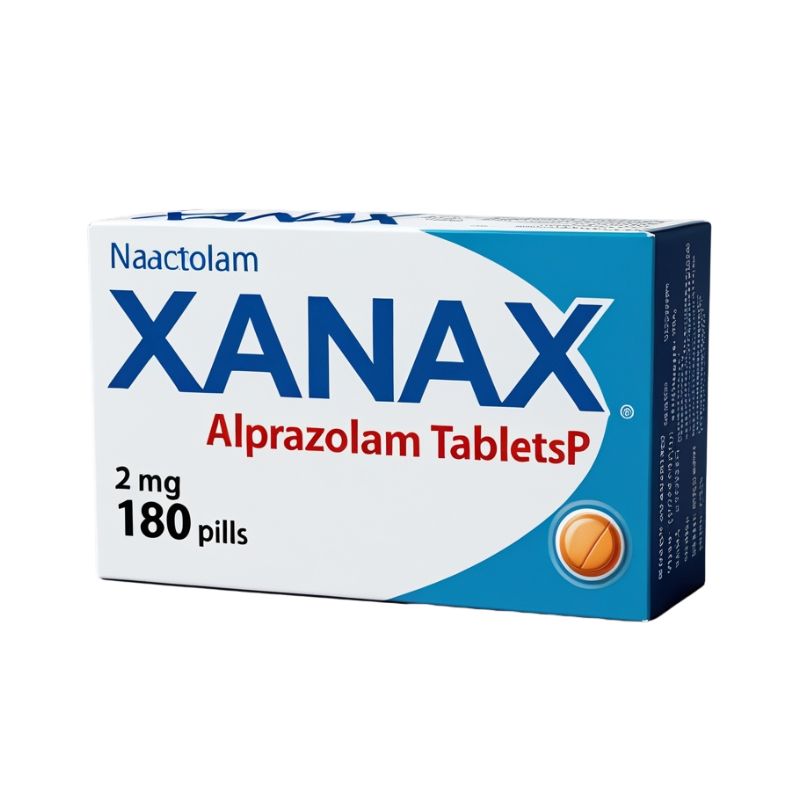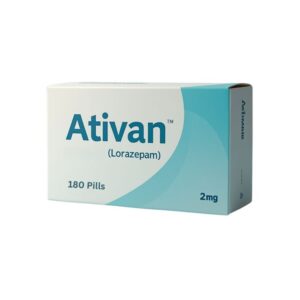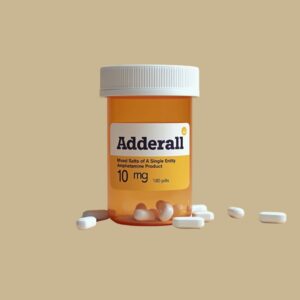Xanax (Alprazolam)
Brand Name: Xanax
Generic Name: Alprazolam
Drug Class: Benzodiazepine
Available Strengths: 0.25 mg, 0.5 mg, 1 mg, 2 mg
Common Forms: Tablets, extended-release tablets (Xanax XR), orally disintegrating tablets, liquid solution
Manufacturer: Pfizer (brand-name); multiple manufacturers for generics
Overview
Xanax, which is also known as alprazolam, is a prescription drug that belongs to the group of drugs called benzodiazepines. These drugs are known to calm the central nervous system. Most people use it to treat anxiety disorders and panic disorders, as well as to temporarily alleviate the symptoms of anxiety. Xanax is one of the most commonly prescribed psychiatric drugs in the US. When used correctly and under medical supervision, it can help a lot with short-term mental health problems.
How Xanax Works
Xanax works by making gamma-aminobutyric acid (GABA) work better. GABA is a neurotransmitter in the brain that makes you feel calm and less irritable. By connecting to certain GABA receptors, Xanax lowers brain activity that is too excited. This process makes you feel calm, relaxed, and sleepy. Because of this, it works well to treat generalized anxiety disorders and panic attacks.
Indications and Uses
The FDA has approved Xanax for the following conditions.
- Generalized Anxiety Disorder (GAD): Characterized by persistent and excessive worry about various aspects of life, including health, work, and social interactions.
- Panic Disorder: severe episodes of fear that come on quickly and are accompanied by physical symptoms like chest pain, shortness of breath, heart palpitations, or feeling dizzy.
- Anxiety Associated with Depression: When anxiety and depression coexist, doctors may prescribe Xanax in addition to antidepressants.
Off-label Uses:
Health care professionals may sometimes give Xanax for other reasons, like:
- Anxiety can lead to sleep problems (insomnia).
- How to treat agoraphobia in the short term
- PMS (premenstrual syndrome) symptoms that are very bad
- Withdrawal from alcohol in a safe place
Dosage and Administration
How much Xanax a person needs depends on their condition, how well they respond to treatment, their age, and any other drugs they are taking. To avoid dependence or withdrawal, follow your doctor’s orders.
Typical dosages include:
| Condition | Initial Dose | Maximum Dose |
|---|---|---|
| Anxiety Disorder | 0.25 – 0.5 mg 3 times daily | Up to 4 mg per day |
| Panic Disorder | 0.5 mg 3 times daily | Up to 10 mg per day (under supervision) |
Note: Dosage changes should only be made by a doctor or nurse doctor. Do not change the dose on your own.
You can take Xanax by mouth with or without food. Swallow Xanax XR whole for best results.
Side Effects
Xanax may have side effects, just like any other drug. Some common and serious side effects are:
Common Side Effects:
- Drowsiness
- Dizziness
- Tiredness
- Memory problems
- Poor coordination
- Slurred speech
- Dry mouth
Serious Side Effects:
- Mood changes (e.g., hallucinations, suicidal thoughts)
- Confusion
- Difficulty speaking
- Loss of coordination
- Trouble breathing or swallowing
- Seizures
Please seek medical assistance immediately if you experience any serious side effects. People who already have health problems, especially with their liver, kidneys, or breathing, should talk to their doctor before taking Xanax.
Warnings and Precautions
Because of its potential for abuse, misuse, and addiction, the Drug Enforcement Administration (DEA) has placed Xanax on Schedule IV. We should advise people to take it with caution. Important Warnings:
- Dependency: Long-term use can make you physically or mentally dependent on it. For the shortest amount of time, use the lowest dose that works.
- Withdrawal: Do not stop taking Xanax all of a sudden. Some withdrawal symptoms include seizures, irritability, trouble sleeping, and a return of anxiety.
- Respiratory Depression: Do not mix Xanax with opioids, alcohol, or other drugs that slow down the central nervous system (CNS). Doing so could cause you to stop breathing or even die.
- Driving or Operating Machinery: Xanax can make it harder to think clearly, make decisions, and move.
Interactions with Other Medications
There are several drugs that may interact with Xanax, making side effects worse or less effective. Tell your doctor about all of the medicines you’re taking, such as:
- Opioids (e.g., oxycodone, morphine)
- Alcohol
- Antifungal drugs (e.g., ketoconazole, itraconazole)
- Antidepressants (e.g., fluoxetine, sertraline)
- Anticonvulsants
- HIV protease inhibitors
When you take Xanax with other CNS depressants, you may become much more sleepy and run the risk of overdosing.
Pregnancy and Lactation
Xanax is in Pregnancy Category D, which means it might be hazardous for the baby. It’s not a good idea while pregnant unless the possible benefit is greater than the risk. Using Xanax late in pregnancy may result in neonatal withdrawal syndrome. Additionally, Xanax can infiltrate a mother’s breast milk, potentially harming the baby. Talk to your doctor about safer options.
Storage and Handling
- Store Xanax at room temperature (20°C to 25°C / 68°F to 77°F).
- Keep in a secure, dry place, away from heat and moisture.
- Keep out of reach of children and pets.
- Do not share your medication with others.
Conclusion
When used correctly and under medical supervision, Xanax (alprazolam) is a fantastic drug for treating severe anxiety and panic disorders. Because it works quickly, it’s often used to treat symptoms right away, but there is a chance of becoming dependent on it and having to stop using it. Patients should carefully follow their doctor’s instructions and refrain from self-medicating or abruptly stopping their medication. With the right care and attention, Xanax is still an important part of modern anxiety treatment, whether it’s used short-term for anxiety attacks or as part of strict long-term plans for panic disorder.





